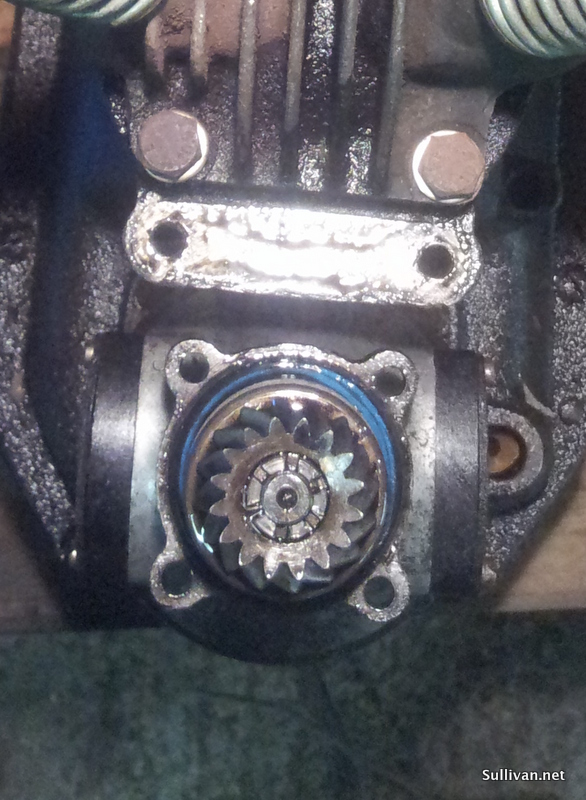Removing the forks from the frame (from Lars):
"The nuts are counter nuts and there should be a washer with a tab that goes into the machined slot along the threads.
The top nut is just a nut, but the bottom nut is a bearing race for the steering column bearing.
Once that is out, the whole steering column is lose and so are both the balls of the top bearing and the balls of the bottom bearing. There are 12 in each bearing and they are NOT easy to get back in place. However, this is something that has to be done now and then since, like all bearings, they need lubrication. Famous GOTCHA is to put 13 balls in either bearing since it looks as if one is missing. This will make the bike go sailing all over the place..
To remove: Use a VERY wide wrench that fits the nut. Unscrew nut number 1, remove washer.
Prop up the fork (wheel out) so that it can be lowered gently, unscrew nut number 2. Apply a strong magnet to fish out the top balls, with the fork pressed upwards.
VERY gradually lower the column and fish out the balls with the strong magnet as the column comes down.
Do inspect the inside of the frame part of the steering column. More often then not, you can salvage lost balls from inside there and you need them...
When replacing the balls, use VERY sticky and firm grease and glue the balls in place in the bottom race. Press fork up and column in place and secure so that the steering column is centered. Glue the top balls in place with that heavy grease and replace the top race. Make sure that there is no play but that the races do not bind. Put the washer in place and tighten GOOD with the top nut."
To loosen the nuts I needed a 46mm wrench and a pip to extend the reach with 2 people holding down the frame.







































